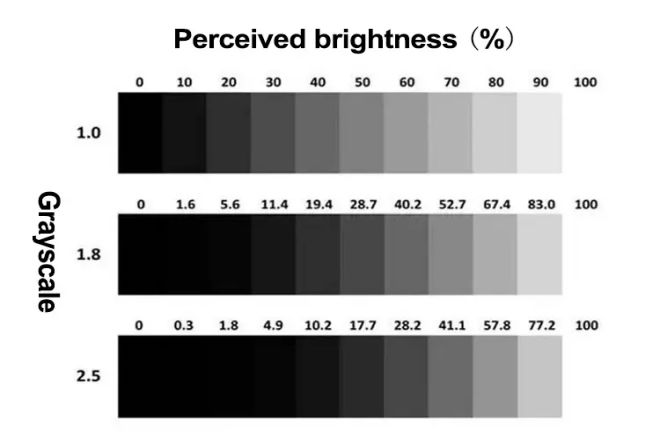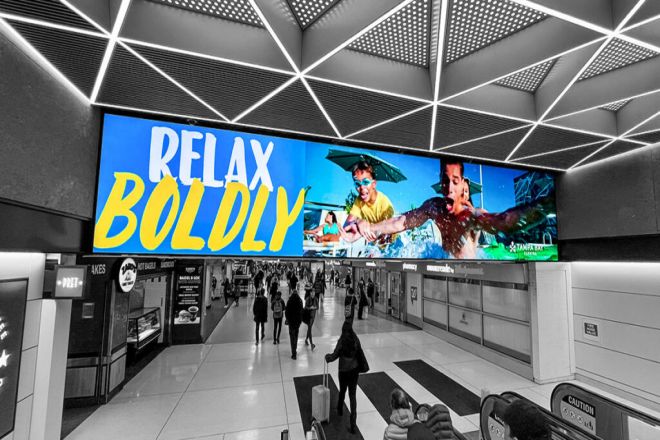Introduction

Écrans d'affichage LED have been widely used in various fields, from commercial advertising and stage performances to monitoring displays, and their presence is everywhere.
As one of the core technical indicators of LED displays, grayscale technology plays a vital role in improving display effects and enriching color levels.
So, do you know about the grayscale technology of LED displays? It doesn’t matter if you don’t have one. This article will take you to study the grayscale of LED displays.
1. Introduction to the grayscale concept of LED display

LED display grayscale is an important concept related to image display quality. It is related to the brightness and color performance of the images we see. Simply put, grayscale is the number of brightness levels on the screen from darkest to brightest.
The more these levels there are, the more subtle changes the picture can show, like going from black and white to color and gradually becoming richer.
Imagine that when we look at a painting, if there are only two colors, black and white, the picture will look very simple and lack a sense of hierarchy. But if the colors in the picture gradually transition from black to gray and then to white, the layers of the picture will be richer, and the details will be clearer. This is the role of grayscale in image display.
For LED displays, each pixel can emit light, and the grayscale determines how brightly these pixels emit light. Just like we adjust the brightness of a TV, the higher the grayscale, the more brightness levels the pixels can display, and the more delicate the picture will be.
Not only that, grayscale is also closely related to color performance. Color is a mixture of three basic colors: red, green, and blue, with different brightness. If the gray level is not high enough, the brightness changes of these basic colors will be limited, thus affecting the richness and realism of the colors.
To achieve these gray-level changes, you need to rely on the control system of the LED display. These systems achieve different grayscale values by precisely controlling the brightness and color of each pixel. In this way, we can see those pictures with bright colors and rich details.
2. The grayscale of the LED display

The gray level of an LED display is one of the key indicators to evaluate its image display quality.
It represents the number of brightness levels that the display can distinguish in the process from the darkest to the brightest. The higher the gray level, the more delicate the brightness changes the display can show, the richer the color levels, and the clearer the image details.
The distinction of gray levels is mainly achieved through the brightness control accuracy of pixels by the internal control system of the display screen. The control system controls the brightness of each pixel by accurately adjusting its current or voltage to achieve different gray levels.
This control is usually digital, so the grayscale is directly related to the number of bits. With the continuous advancement of technology, the control system is also constantly optimized, allowing the LED display screen to show more delicate and realistic picture effects.
Grayscale is usually expressed in units of “bits” because the number of grayscale levels is calculated by powers of 2.
For example: An 8-bit grayscale means that the display can display 2 to the 8th power or 256 different grayscale levels. This means that from darkest to brightest, the screen can be divided into 256 uniform brightness levels. In the same way, 10 bits correspond to 1024 gray levels, 12 bits correspond to 4096 gray levels, and so on.
3. What is the difference between the grayscale of indoor and outdoor LED displays?

There are indeed some differences in grayscale between indoor and outdoor LED displays. These differences are mainly due to their different application environments and needs.
Tout d'abord, indoor LED displays have relatively high grayscale requirements. Since the indoor light is relatively stable and the audience is usually closer to the screen, the details and color changes of the image can be observed more clearly.
In order to present a more delicate and realistic picture effect, indoor LED displays often use higher gray levels, such as 10-bit or even 12-bit gray levels. In this way, the screen can show more brightness levels, making the image richer in color and clearer in detail.
In contrast, although the requirements for grayscale outdoor LED displays are not as high as indoors, they also have their own particularities. The outdoor ambient light changes greatly, and direct sunlight or shadows may affect the display effect of the screen.
Therefore, outdoor LED displays pay more attention to the performance of brightness and contrast to ensure a clear picture under various light conditions. Although the grayscale level may be relatively low, outdoor LED displays still need to ensure a certain grayscale level to maintain color contrast and detail expression under strong light.
En outre, it is worth noting that whether it is an indoor or outdoor LED display, its grayscale performance is affected by the control system. By optimizing the control system, the grayscale and color reproduction of the display can be improved, thereby improving the overall display effect.
Therefore, when selecting and using LED displays, it is necessary to reasonably configure and control the gray scale according to the actual application environment and needs.
4. What will happen to the LED display if the grayscale setting is incorrect?

If the grayscale setting of the LED display is incorrect, a series of serious problems will occur, which will have a significant impact on the display effect and user experience. Here’s a detailed explanation of what might happen:
- Image detail loss and color distortion
The grayscale determines the number of brightness levels that the LED display can display. If the grayscale setting is too low, the brightness levels of the display will be reduced, resulting in the inability to display the details of the image accurately.
For example, when displaying a landscape, the gradient effect of the sky and clouds may become less noticeable, and the textures of leaves and grass may become blurred. At the same time, color will be severely affected.
Due to insufficient grayscale, the display may not accurately restore the colors of the original image, resulting in color distortion or color cast. This color distortion is especially noticeable when displaying faces or complex textures, making the picture look unnatural or distorted.
- Decreased picture contrast and clarity
Improper grayscale settings may also affect the contrast and clarity of the LED display. Contrast refers to the difference in brightness between the brightest and darkest parts, which determines the contrast between light and dark in the picture.
If the grayscale setting is incorrect, it can cause a contrast imbalance, making the image look too bright or too dark. This will affect the audience’s perception of the screen content and reduce the viewing experience. At the same time, clarity will be affected. Clarity refers to the sharpness and detailed expression of the picture.
Wrong grayscale settings may cause the edges of the image to be blurred, making it difficult to distinguish details and making the overall picture unclear.
- Energy waste and shortened lifespan
In addition to the impact on the display effect, incorrect grayscale settings may also cause energy waste and shorten the life of the display. If the grayscale setting is too high, the brightness of the display will be too high, resulting in increased energy consumption. Not only does this increase operating costs, it may also place an unnecessary burden on the environment.
At the same time, long-term high-brightness operation may also accelerate the aging process of the display and shorten its service life. Pixels may be damaged due to excessive brightness, causing problems such as dead pixels or uneven brightness on the display.
- Decline in audience experience
For viewers, LED displays with incorrect grayscale settings will bring them a bad viewing experience. Problems such as blurry images, color distortion, and insufficient contrast can make it difficult for viewers to concentrate and fully enjoy the content.
Watching such a display for a long time may also cause fatigue or discomfort to the eyes, affecting the audience’s viewing experience.
Conclusion
The above is all the information about the grayscale of LED display. Do you now have a specific understanding of the grayscale of LED displays? If you want to know more about LED displays, Contactez nous s'il vous plait!
